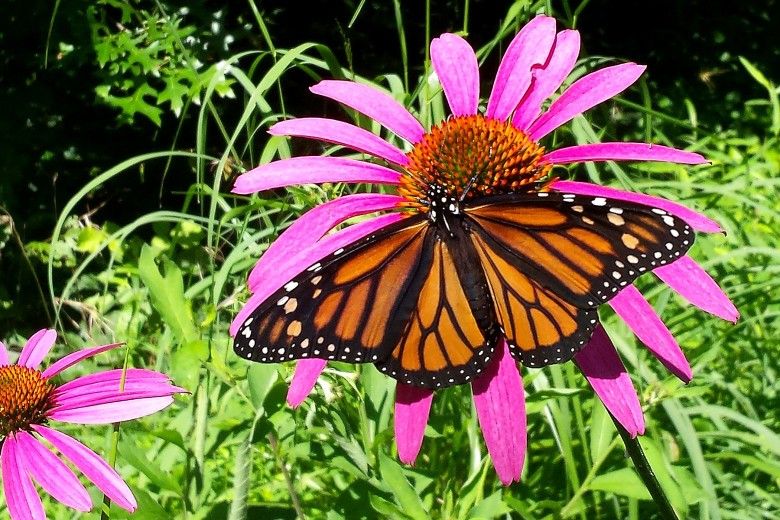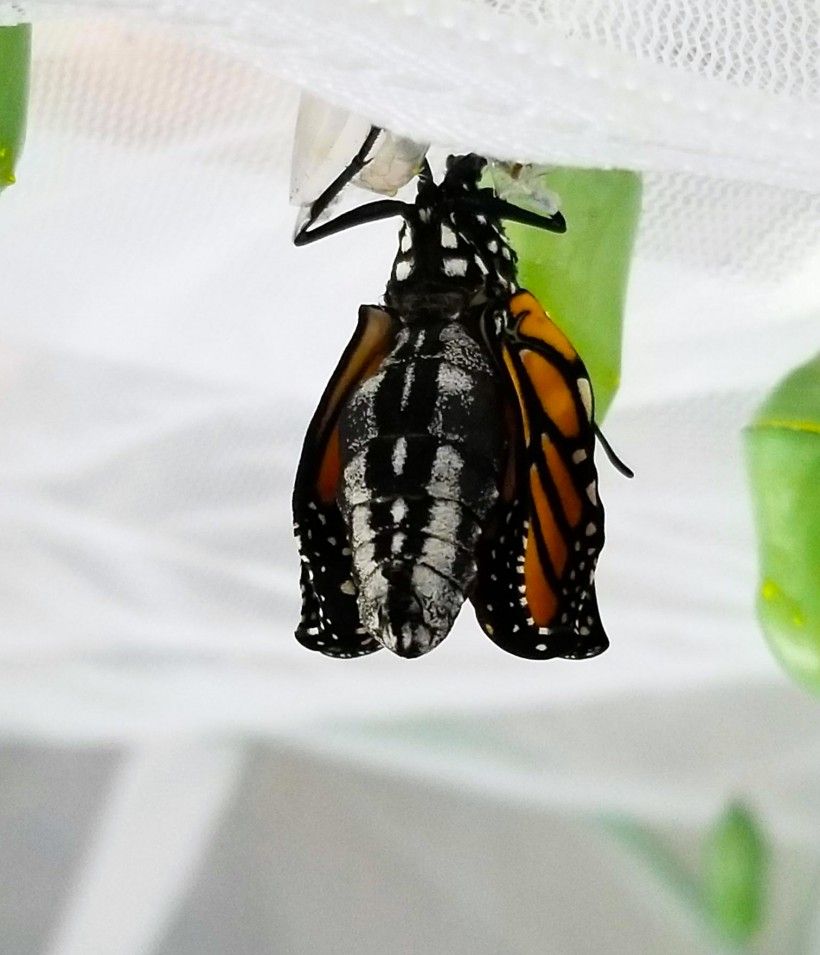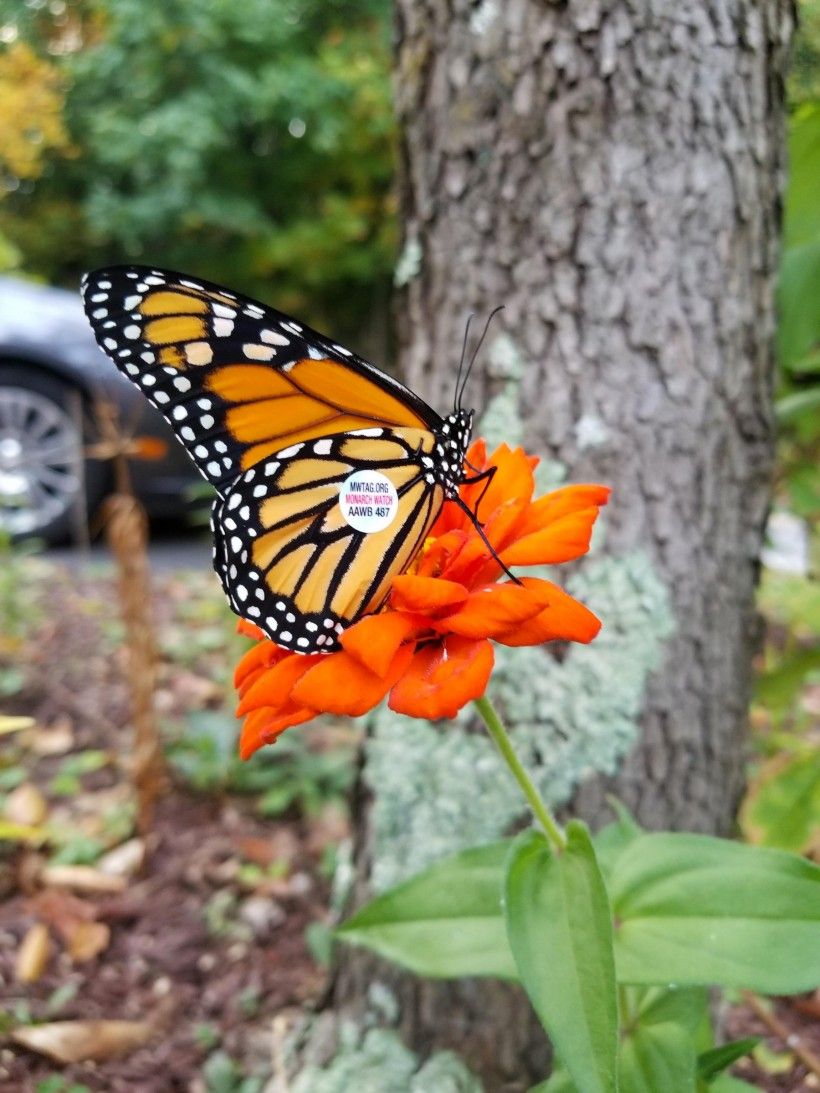Reared vs Wild Monarchs

Monarchs are symbolic in their flight and fight for survival against habitat loss, pesticide use and climate change. Some people raise monarchs in the hopes of helping their populations, but is that causing more harm than good?
Last year was the first year I raised monarchs in captivity, partially because I was running out of milkweed for the explosion of caterpillars on my home milkweed patch and, in part, to use them for education programs. I also hoped I was saving a few from natural predators, like stink bugs—specifically the spined soldier bug—and tachinid flies, and boosting their population just a wee bit.
Using cages made of nylon webbing with a plastic panel for unobstructed views, I placed napkins and paper towels at the bottom of the pen, then cut milkweed stalks and placed them in a vase of water to provide food for the monarch caterpillars that would call this enclosure home for the remainder of their larval and pupal stages. Raising monarchs is a lot of work, though. Those little caterpillars create a lot of frass, or poo, that should be cleaned out of the cage daily, and the milkweed they devour should be kept crisp and moist.

I have read that monarchs raised indoors are not exposed to the same environmental cues that support monarch migration, be it the length of daylight, the temperature fluctuations, the orientation of the sun, or even the roughness of milkweed leaves that come with the plant’s age—because if you’re like me, you’re cutting young, tender stems for your monarch caterpillars! Monarchs seem to need these signals to prepare and make their migratory journey south, so the monarchs raised without these cues may not be as successful in their travels.
Tagging is a way for scientists to study monarch migration with the assistance of citizen scientists. Participants place a small sticker with a unique code on the discal cell (the one that looks like a mitten) of a monarch with the information then fed into a database. Tags on captured or otherwise recovered monarchs may then be compared to the database to garner some insight to that butterfly’s journey.

The title of an article published on April 8, 2020 by Andrew Davis, Farran Smith and Ashley Ballew gives it away: “A poor substitute for the real thing: captive-reared monarch butterflies are weaker, paler and have less elongated wings than wild migrants.” Studying groups of captive-reared monarchs and a group of wild-caught monarchs, this team assessed the “grip strength” of these butterflies and measured their wing size, color and shape, which are indicators of their migratory propensity. The researchers found that reared monarchs “underperformed compared to wild ones, even those reared under conditions that should have produced migration-ready individuals.”
The abstract of this paper states that, “The reason(s) behind these effects is unknown but could stem from the frequent disturbance and/or handling of reared monarchs, or the fact that rearing removes the element of natural selection from all stages.” Sadly, that jostling in my car as I carried the caged monarchs back and forth from work to home last year, as well as the daily disturbances as I replaced milkweed and cleaned up the frass, might have negatively impacted these beautiful creatures. Also, I could be tipping the scales and allowing a monarch—that might not have otherwise survived to that stage—to live, passing on weaker genetic material, which, over time, could create a population of weaker, navigationally-challenged monarchs. The aforementioned article states that, “In the wild, fewer than 5% of all eggs and immature monarchs survive the larval stage.” Tagging individuals in that 5% would be like placing a badge on the strongest and fittest monarchs.
While I don’t want to discourage anyone from raising and studying monarchs—as we all know the importance of connecting people, especially youth, to the natural world and fostering a sense of wonder and stewardship—I would encourage you to read more about monarchs and the research centered on this king of butterflies, as well as consider putting more effort into restoring and conserving their habitats than in raising them. I know I will.
Event Announcement:
Due to Covid-19, the “Monarchs, Milkweed and More” events that Penguin Court holds in partnership with the Southern Alleghenies Museum of Art will be virtual this year. Those interested in attending are most welcomed to join us for one, two or all three of the following presentations via Zoom! Click here to register for one or all three upcoming events.
- Monarchs – Their life cycle, fun facts, and migration: Monday, September 21, 12-12:45 p.m.
- Milkweeds – Plants vital to monarchs and more (those “other” bugs we find on milkweeds): Monday, September 28, 12-12:45 p.m.
- More – A guided activity blending nature and art: Monday, October 5, 12-12:45 p.m.
Photos by Melissa Reckner.